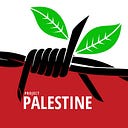B’Tselem: Israeli policy of forcible transfer of Palestinians
A new B’Tselem report released today, “Playing the Security Card: Israeli Policy in Hebron as a Means to Effect Forcible Transfer of Local Palestinians”, demonstrates how Israel has been using security excuses to implement a policy that has made life unbearable for the Palestinian residents of Hebron’s city center (the Old City), in an effort to drive them from their homes.
JERUSALEM, September 25, 2019 (WAFA) — A report published Wednesday by the Israeli human rights group B’Tselem pointed out to the policies implemented by the Israeli occupation authorities in Hebron as means to forcibly transfer local Palestinians from their property and land under the pretext of “Israeli security”.
Titled Playing the security card: Israeli Policy in Hebron as Means to Effect Forcible Transfer of Local Palestinians, the report said that for 25 years, Israel has been openly pursuing a policy of segregation in the center of Hebron, in order to allow a handful of Jewish residents to live as though they had not settled in the middle of a bustling Palestinian city, in the heart of an occupied territory.
“This policy completely ignores the needs of hundreds of thousands of Palestinians and sentences them to an unbearable reality, with the hope that they will leave their homes ostensibly of their own free will,” it said.
The report said that “due to the settlers’ presence in the city, Israel and the PLO did not sign an agreement concerning Hebron until 1997, two years after the Oslo Accords were signed. Under the terms of the agreement, the city was divided in two: In Area H1, which was home to about 115,000 Palestinians at the time, security and civilian powers were formally transferred to the Palestinian Authority (PA) as in other West Bank cities. Area H2, which includes the Old City and all the settlement points and was home to some 35,000 Palestinians and 500 settlers at the time, remained under Israeli control in terms of security, while the PA was given civilian powers relating to Palestinian residents only.”
“About 700 settlers currently live in H2, within a smaller area spanning 800 dunams (1 dunam = 1,000 square meters), which includes the immediate vicinity of the settlers’ houses and the streets they use. Currently, about 700 settlers live in this area, some 400 permanently and another 300 or so are students of the Shavei Hevron yeshiva. This area is home to about 7,000 Palestinians, about 1,000 of whom live in a narrow strip that runs from the Tomb of the Patriarchs through a-Shuhada Street to Tel Rumeida, where most of the settlers’ homes are concentrated,” said the report.
In recent years, both official and unofficial plans have been advanced to expand the settlement and develop tourism in the historic center of Hebron. If these plans come to fruition, the settler population in Hebron stands to double over the next few years, added the report.
The full text of the report can be viewed here.
